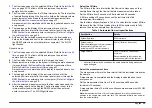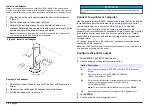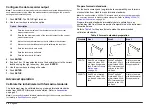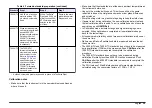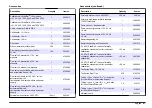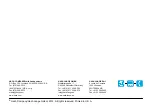
Calibration with user-selected values of formazin standards is done
using the same method that is used to calibrate the instrument with
recommended formazin standards with two differences:
• The prepared formazin standards used are user-selected standards
and not the recommended standards. Refer to
on page 42.
• The calibration points that are shown on the display must be changed
as they occur so they agree with the turbidity of the user-defined
standards. Refer to
on page 42.
Note: Unknown performance may occur if standards other than the recommended
calibration points are used. The recommended calibration points (< 0.1, 20, 200,
1000, 4000 and 7500 NTU) provide the best calibration accuracy. Refer to
Application note 128, Calibration Methods for Low-Level Turbidity Measurement.
Prepare formazin standards – user selected
User-selected values of formazin standards are prepared using the
same method that is used to prepare the recommended formazin
standards. Refer to
on page 38.
Prepare user-selected values of formazin standards to span the entire
range of the instrument. Four standards are necessary. Suggested
standards are in the range of:
• 10–30 NTU
• 180–220 NTU
• 900–1000 NTU
• 4000 NTU
Formazin standards greater than 80 NTU must have a difference of at
least 60 NTU.
Change the calibration points
When using user-selected values of formazin standards during
calibration, change the calibration points that are shown on the display
as they occur. Change the calibration points so that they agree with the
turbidity of the user-defined values.
For example:
A 25-NTU standard is put in the sample cell holder
instead of the recommended 20-NTU standard during calibration.
Change the "20.000" on the display to "25.000" before pushing ENTER
to start the measurement.
To change the value on the display during calibration:
1.
Push the right arrow key. The decimal point flashes.
2.
Push the right arrow key to move the cursor to the next position.
3.
Push
ENTER
to accept the new cursor position.
4.
Use the up and down arrow keys to change the number on the
display.
5.
Do steps 2–4 again if necessary to change the other digit.
6.
Push
ENTER
to save the change and start the measurement.
Special research applications
The instrument has special features and operations for special research
applications.
Application specific methods
Use the application specific calibration (ASC) measurement modes to
measure turbidity with direct readout in units other than FNU, NTU or
EBC. The unit of measurement, initially referred to as ASC -1- and -2-
can be changed by choosing alpha numeric characters during method
entry.
The display value is set by entering a multiplication factor. The
instrument multiplies the actual NTU value by the multiplication factor
and shows the result.
For example:
An application for monitoring in the Nephlos (NEP) unit of
measurement can be made by entering a multiplication factor of
6.7 (1 FNU or NTU is equivalent to 6.7 Nephlos).
Application specific calibration
This instrument can be used to enter an application specific unit and a
multiplication factor that gives results in that application specific unit. The
multiplication factor is applied to the NTU reading of the instrument and
shown in the application specific unit.
Either ASC multiplication factor can be changed at any time, so
recalibration is not necessary.
The sample is under-range if the display flashes 0s.
42
English
Summary of Contents for 2100AN IS
Page 1: ...DOC022 53 80206 2100AN IS 05 2014 Edition 4 User Manual...
Page 2: ......
Page 51: ......






